Pride of Place: Poole Pottery
These days, Poole might conjure images of Sandbanks’ golden strand with its millionaires’ mansions. But for centuries it was ceramics that made the coastal Dorset town famous. In its heyday, Poole was a company that stood out for its constant reinvention and innovation, earning it an international reputation.

Since Roman times, the fine clays found in the area, together with its large, sheltered harbour, encouraged pottery enterprise. During the Victorian age, a handful of Staffordshire potters gravitated south, establishing businesses producing architectural items and glazed tiles for shop façades and interiors.
But the company that really propelled Poole to fame started in 1873, when Jesse Carter, a local builder’s merchant, bought an ailing tile manufactory on Poole Quay and established Carter & Co. To begin with, the company continued to produce the glazed and terracotta tiles, and the architectural faience that already had an established market.
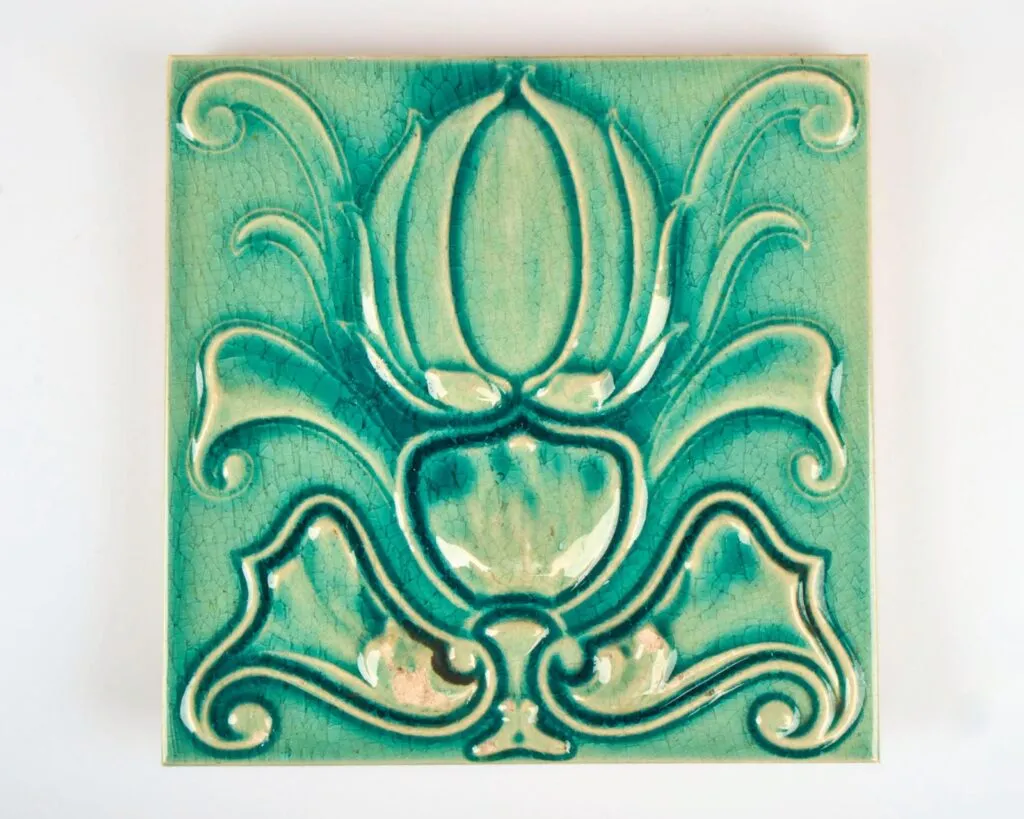
A small shift followed in 1901, when Jesse’s son, Owen, who had an interest in glazing, began to experiment with the production of decorative wares including vases, platters and jewellery. The earliest Carter & Co pieces often had rich lustre glazes, sometimes with banding, reflecting the Arts and Crafts style that was popular at the time.
It was the success of these wares that encouraged the Carters to appoint designer James Radley Young as art director, and to forge links with Roger Fry and other members of the Bloomsbury Group, who wanted to produce pots for the Omega Workshops. These pots were hand-thrown and skilfully hand-painted by a small number of Belgian refugees, who were expert in the use of tin-glaze Delftware decoration.
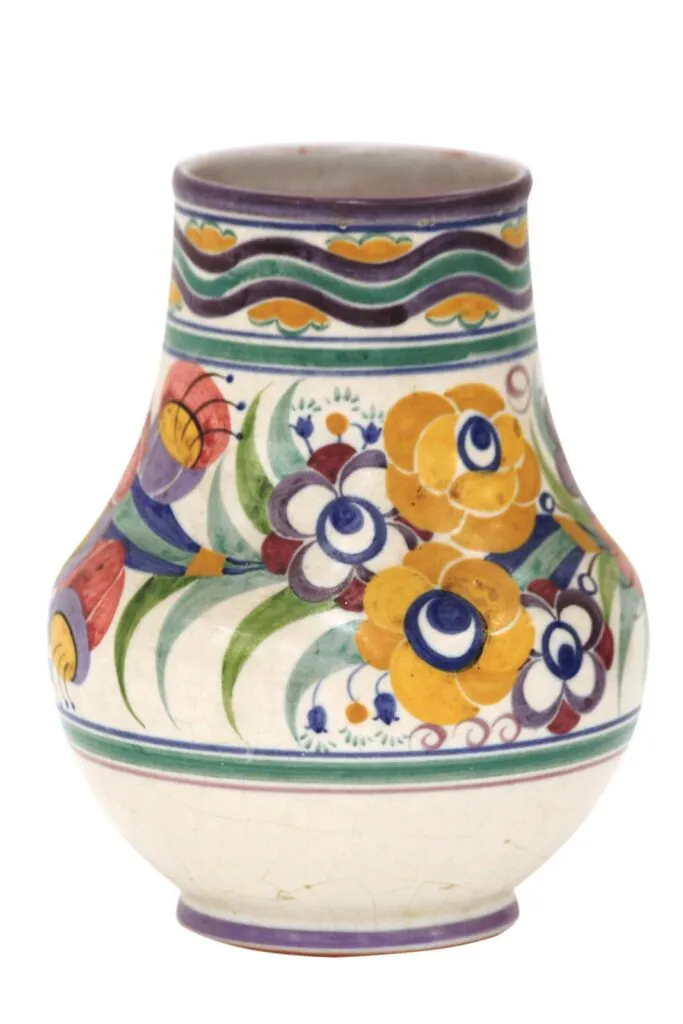
The pivotal moment in Poole’s story came in 1921, when Cyril Carter, Owen’s nephew, formed a company with Harold and Phoebe Stabler, and John and Truda Adams. The Carter, Stabler, Adams union gave rise to some of Poole’s most inventive (and valuable) creations.
Harold Stabler, a silversmith and jeweller, created figure and shape designs, as did his wife, Phoebe, who was a trained sculptor. Meanwhile, the Stoke-on-Trent ceramicist John Adams developed the glazes, as well as the shapes, of decorative pots, and his designer wife, Truda, created the decoration for them.

Inspired by European modernism and Art Deco design, it was Truda who established the distinctive Poole look, helping to turn Poole Pottery into one of Britain’s best-known names.
Throughout the inter-war period, Poole products were exhibited internationally and sold in the UK at flagship stores such as Liberty and Heal’s, where they were widely acclaimed, with Truda remaining the driving decorative force until her retirement in 1950.
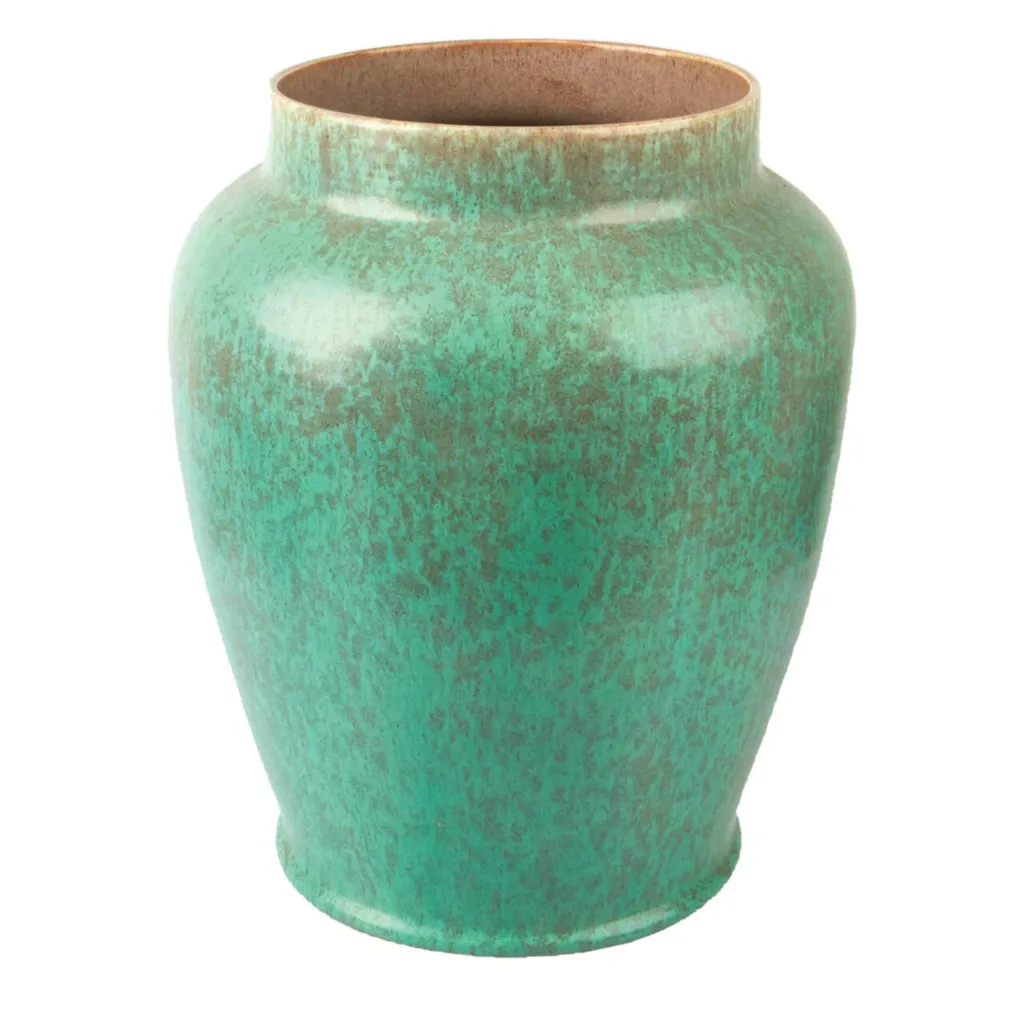
Even when she left her husband and got remarried to Cyril Carter in the late 1920s, the commercial partnership survived the domestic upheaval and continued to flourish. However, after her death, perhaps as a result of family strains, her name as one of the most innovative British ceramic designers has been unfairly lost in the shadows.
After the Second World War, in the 1950s, the company returned to prominence, investing in new technology and making highly commercial tablewares alongside its handmade studio pieces.

The famous semi-matt-glazed, two-coloured range, which had first been produced in the 1930s, was now christened Twintone, and produced in new colours and stylishly fluid shapes. New designers rose to prominence at this time, too, among them Lucien Myers, Alfred Read and Robert Jefferson.
Scandinavian design and the modernist taste of the post-war era are echoed in interesting curvilinear creations, decorated with simple patterns based on textiles in a range known as Freeform.
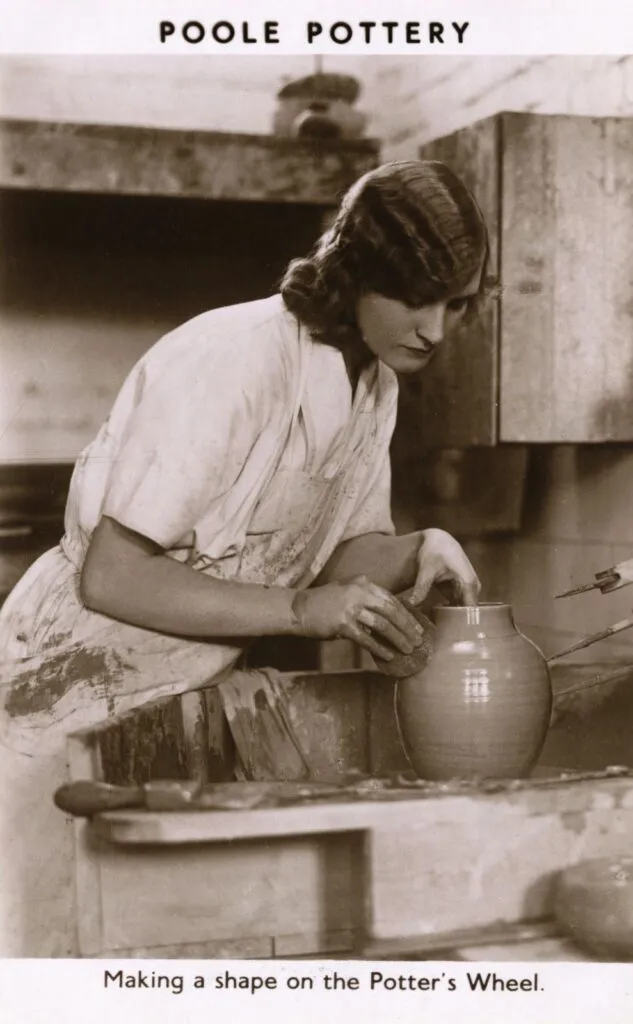
One of Poole’s most celebrated stars of the 1960s was Tony Morris, who produced hand-painted decorative ware featuring sumptuous glazes and abstract forms, inspired by varied sources including Aztec art, and even aerial photos of roundabouts.
Morris, along with Jefferson and Guy Sydenham, was a leading designer of the Delphis range (a reference to Poole’s dolphin logo) which, with its hand-painted abstract designs and rich glazes of orange, blue and green, helped give Poole a dramatic new look in the 1960s and 1970s.

In the final decades of the 20th century, the company gradually lost its way and this, combined with financial setbacks, forced the Dorset factory to close. Now owned by the Denby Pottery Company, Poole ceramics have moved north, and are now made in Burslem, Stoke-on-Trent.
For collectors, Poole offers something for every budget
At the top end of the spectrum, the large decorative pieces of the 1920s and 1930s may fetch hundreds or thousands of pounds. Designs from the 1950s and 1960s – by leading figures such as Guy Sydenham, Alfred Read and Tony Morris – are also much prized and look wonderful in mid-century interiors.
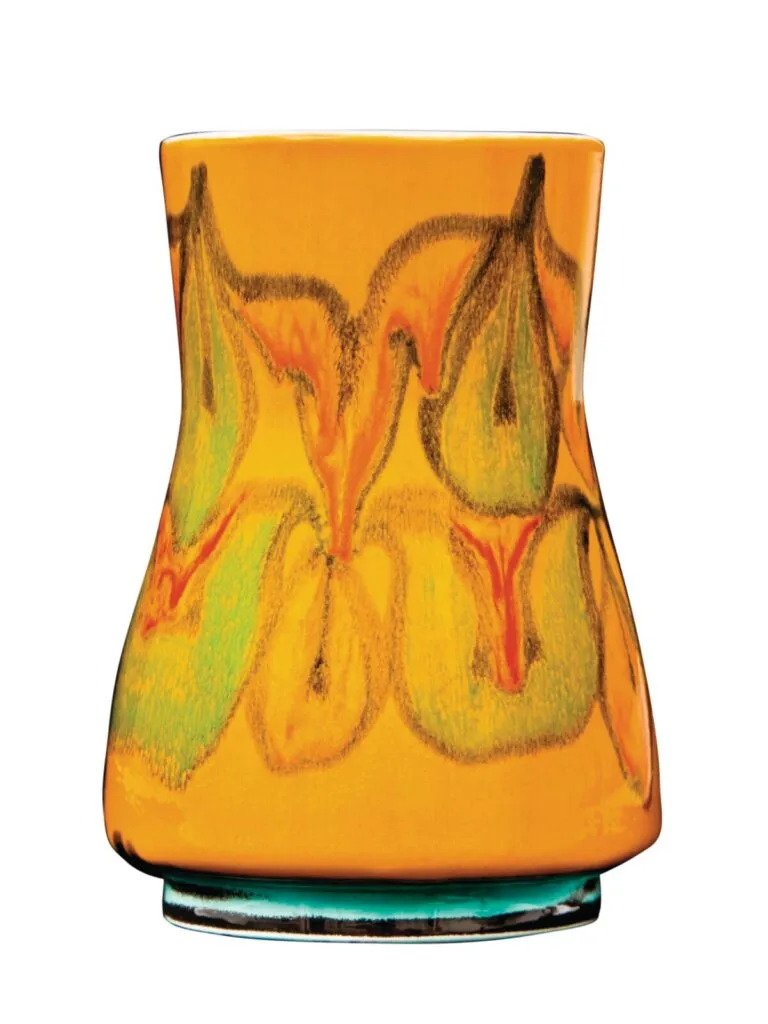
Poole vases were made in a wide range of sizes, with some exhibition pieces a metre tall. Most, however, measure nine inches or less. Vases from the Delphis range might fetch £500, while Freeform examples appear at auction for up to £100.
Meanwhile, Twintone tablewares, available in shapes including Streamline and Contour, can often be found in charity shops and at boot fairs. These later pieces generally cost £10 or less for individual items, and £30 to £150 for sets, making them an affordable starting point for collectors. And, best of all, they can still be used.
